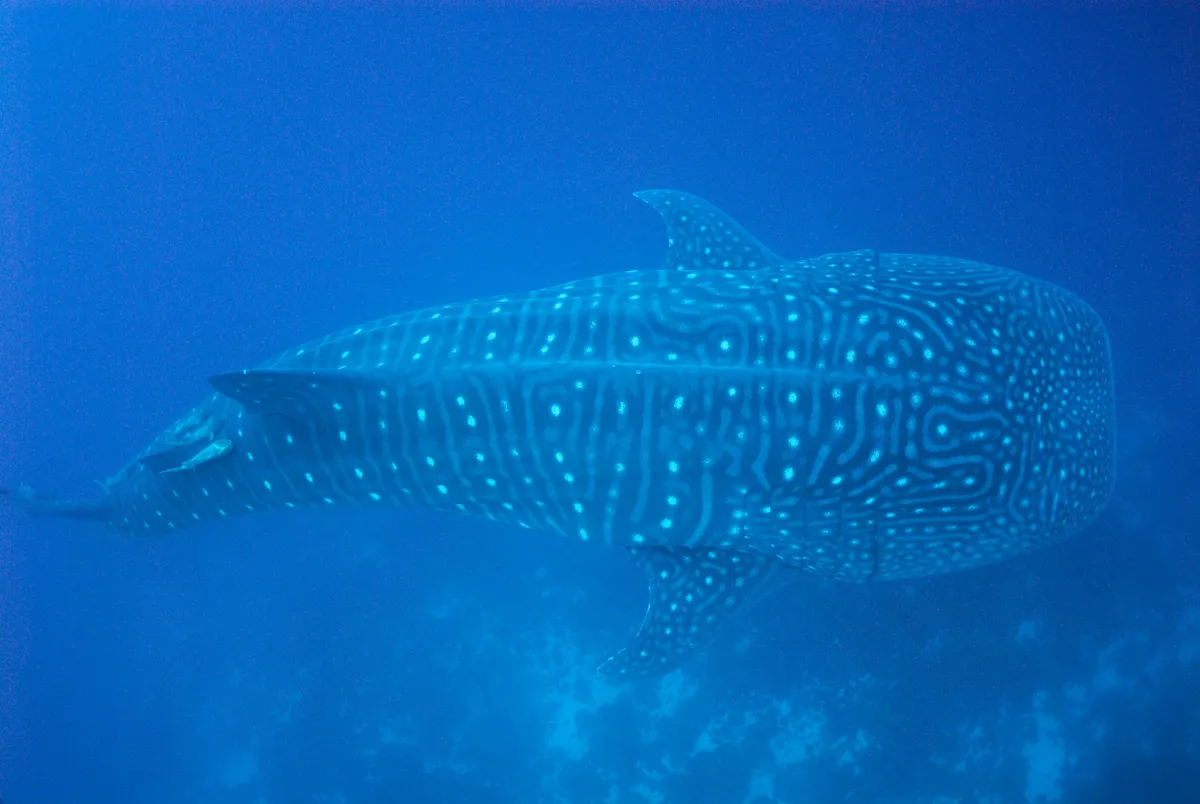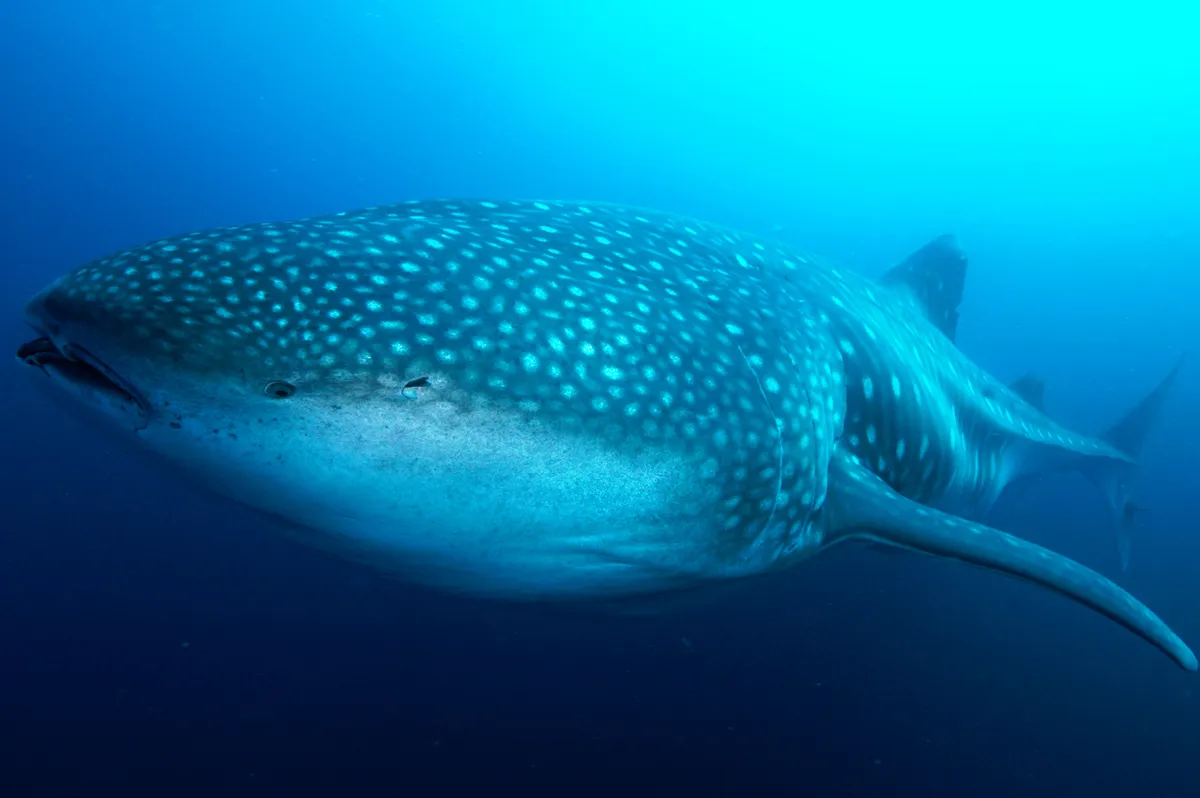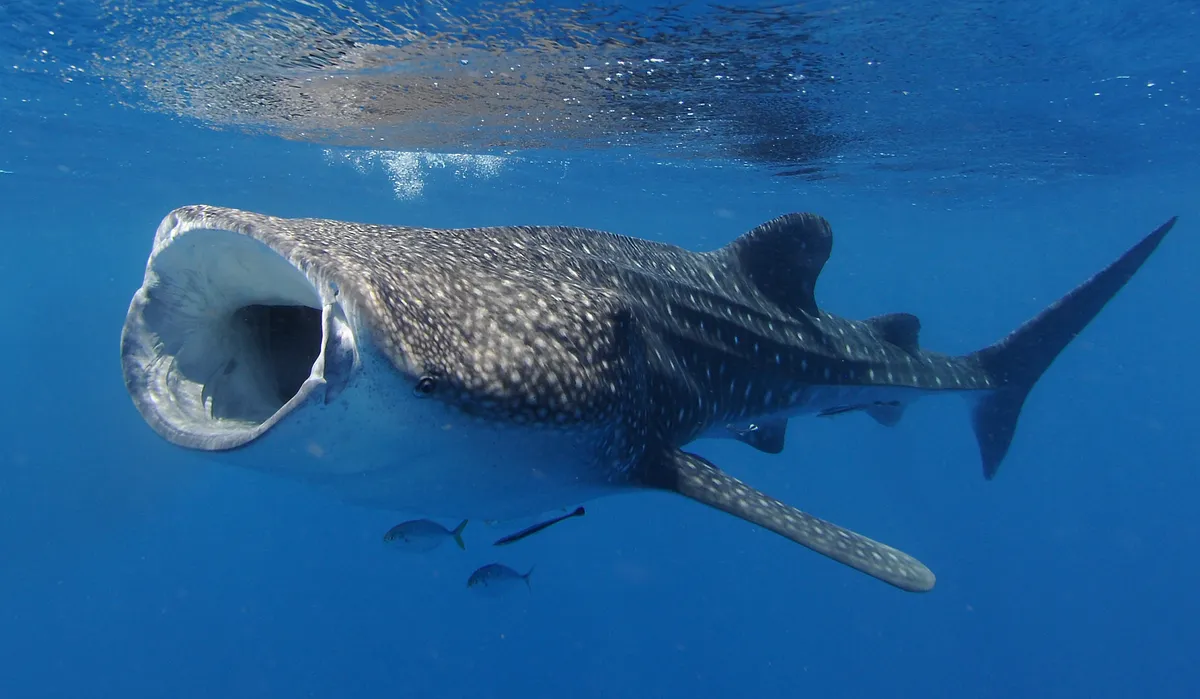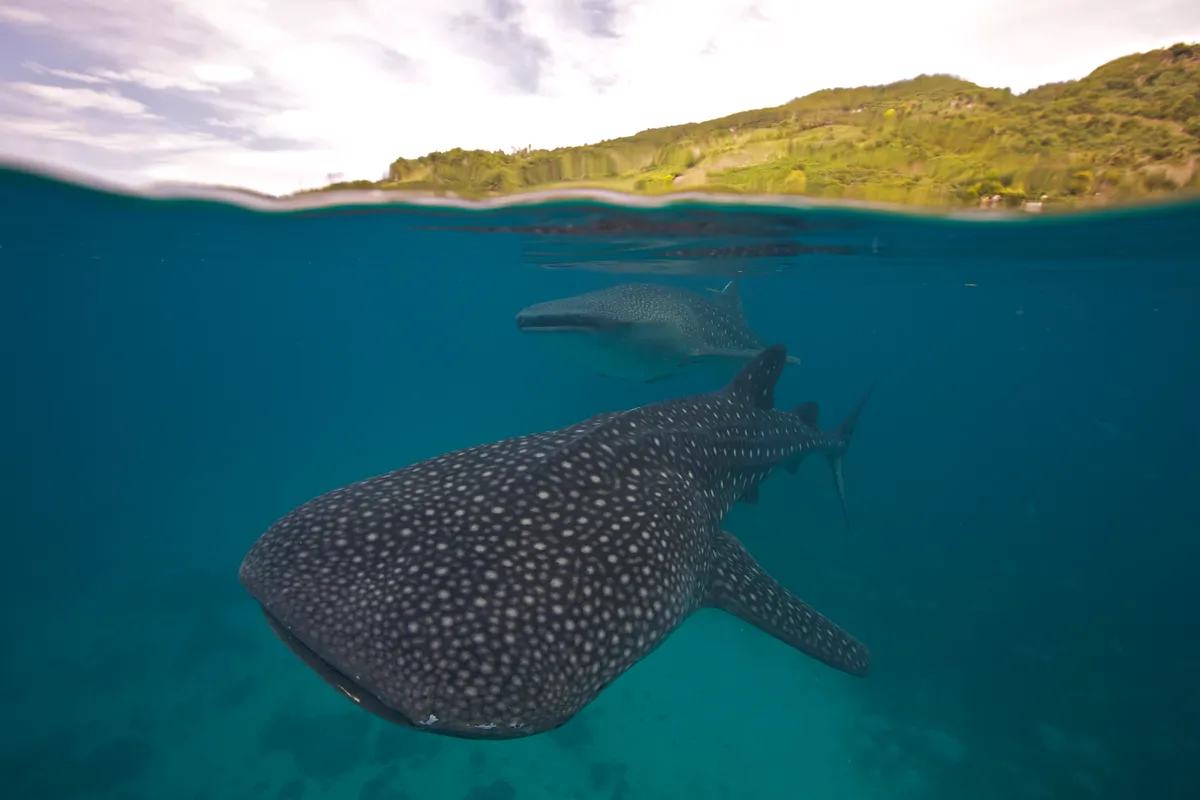Despite being so large, the whale shark is actually a gentle giant and is a filter feeder, sieving sea water for its small prey – plankton. And although it is widespread, very little is known about the reproductive biology of the species.
This charismatic species is popular for divers to swim with, particularly as it is so docile, but scientists and conservationists discourage swimming too close or touching these sharks, as it can interrupt their feeding. In addition, boat propellers can cause injuries to whale sharks.
Learn more about this fascinating and mysterious species in our expert guide by the Galapagos Conservation Trust:
What is the scientific name of the whale shark?
The scientific name of the whale shark is Rhincodon typus. It is the only member of the genus Rhincodon, as well as the only extant species in the gamily Rhincodontidae.
How to identify whale sharks
The upper surface and flanks of whale sharks are grey-blue in colour, and covered with a pattern of white spots. These spots are actually unique to individuals, enabling researchers to identify and track different whale sharks.
Their distinctive spots have led to local names, such as ‘marokintana’ in the Malagasy language in Madagascar which means ‘many stars’.
Whale sharks have a flattened head, with a mouth at the front of the head, rather than underneath, to facilitate its method of feeding. They have small eyes, located just behind the mouth.

How big are whale sharks?
Whale sharks are the largest species of shark and the largest fish alive today. They are on average 10-12 metres in length, however they can reach sizes of 18-20 metres and can weigh up to 30 tonnes. Whale sharks can live to 100 years.

Where do whale sharks live?
Whale sharks can be found in all warm and temperate seas other than the Mediterranean, but as they are a migratory species they live on the move depending on the time of year or ‘whale shark seasons’. These seasons are normally associated with events such as a coral or fish spawning event.
The global population is split into two sub-populations, one in the Atlantic and one in the Indo-Pacific, with the majority (75%) found in the latter.
Scientists studying whale sharks in the Maldives published a paper in 2018 which found that the shark aggregation sites shared common features of warm, shallow water near a sharp sea-floor drop-off into deep water, which offer an ideal combination of both deeper waters for foraging and warmer shallows for basking.
“Sharks are ectotherms, which means they depend on external sources of body heat,” said Dr Bryce Stewart, supervising author from the University of York. “Because they may dive to feed at depths of more than 1,900 metres, where the water temperature can be as cold as 4 degrees, they need somewhere close by to rest and get their body temperature back up.”
Please note that external videos may contain ads:
Whale shark - BBC Planet Earth
What do whale sharks eat?
Whale sharks feed on planktonic food, including zooplankton and phytoplankton but they will also eat small fish from time to time. They are regularly observed swimming close to the surface with their mouth open in a feeding behaviour known as ram-filtration which channels plankton-filled water into their mouth.

Do whale sharks have teeth?
Although whale sharks do have teeth, they are not used for feeding. Teeth measure up to 3mm, and individuals may possess more than 3,000 teeth at any one time.
How do whale sharks reproduce?
A lot is still unknown about the reproductive cycle of whale sharks, as are the locations in which they give birth. Whale sharks are ovoviviparous, which means their embryos initially develop inside an egg that they emerge from whilst still inside the mother, resulting in the birth of live young.
In 2017, scientists were able to undertake the first ever ultrasounds on wild whale sharks, scanning three females.
What are baby whale sharks called?
Baby sharks are known as ‘pups’.
When is whale shark season in the Galápagos Islands?
Whale sharks are most commonly seen in the north of the Galápagos Marine Reserve, close to the islands of Wolf and Darwin between June and November. In Galápagos, 90% of the whale sharks seen appear to be pregnant females. Though research is still underway to discover why this is, it could indicate that whale shark birthing grounds are relatively close by.

Learn more about Galápagos wildlife:
Why are whale sharks endangered?
Whale sharks are currently listed as Endangered on the IUCN Red List, and the species was last assessed in 2016. Previously it has been listed as Vulnerable (2005 and 2000 assessments), and Data Deficient (1996).
Whale sharks are hunted for their meat, fish and oils, particularly in unregulated fisheries, and can also be accidentally caught by fishing gear even when not the target species (known as bycatch).
Although well-intentioned, whale shark tourism can pose threats to the species as boats and divers can interrupt whale sharks from feeding, and can injure whale sharks with boat propellers.

The Galapagos Conservation Trust is the only UK charity to focus exclusively on the conservation and sustainability of the Galápagos Islands.
Main image: A whale shark swimming in Sogod bay, Southern Leyte, Philippines. © Steve De Neef/VW Pics/Universal Images Group/Getty
